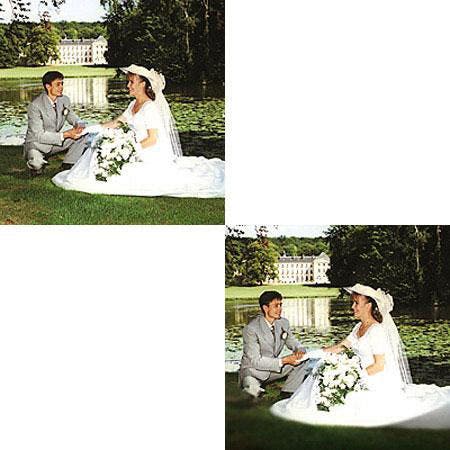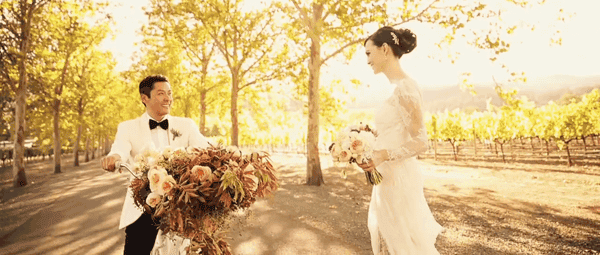It’s strange but true: You can be the best wedding photographer in the world, but if you miss the shot of the bride and her dad walking down the aisle many brides will feel you blew the assignment!
And, to make you even more nervous, if you miss the shot of dad kissing his daughter goodbye at the end of their aisle walk, then the bride’s mother will feel you blew the assignment!
Forget the other 500 great photos you captured, the bride (or her mom) will only see that one glaring hole in your coverage. Considering what can go wrong, even the wisest, most experienced wedding photographers (i.e. those with thousands of weddings under their belts) get a slight case of the butterflies when the organ music ramps up for the processional.
To avoid the pitfalls, and to get these must-have shots, analyzing exactly what happens on the aisle can do a lot to calm your nerves. This being the case, here are four tips to make “the aisle” less fraught with photographic peril.
Wanna be sure? Forget autofocus!
Each summer I teach a course on wedding photography at the Maine Photographic Workshops. During the course, my students and I march around with a bride and groom in tow, photographing them in settings that emulate the real thing.
One of our locations is a church and I have each photographer do the shot of the bride walking down the aisle. Before this rite of passage starts, I tell the bride/model not to stop as she walks down the aisle. Invariably, at least one photographer (if not all of them), well equipped with the latest and greatest autofocus SLR, is dismayed that, as his (or her) camera hunts for focus in the dim church, the bride glides past without him (or her) getting off a single shot!
Here’s the scoop: When a “you only get one chance” photograph is in the “must get” category, it is often best to switch to manual focus. But, taking this a step further, you shouldn’t even try to focus manually as the bride is walking towards you.
The best technique to guarantee success is to preset the focusing scale on the lens to a specific distance (about 10 feet with a 28 mm lens on a 35mm SLR or a 50 mm lens on a medium-format camera) and when your subject crosses that point (10 feet away from you) you push the button. To clarify this in your mind, consider that the average pew is about 2.5 feet wide so, if you are using the 10 foot distance, that’s 4 pews away from where you are standing and it isn’t even necessary to have the camera at your eye until the moment of exposure.
I count off a cadence in my head as I watch the subjects walk towards me. I start to lift the camera up to shooting position when they are five pews away from me so I’ll be ready to make my shot when they are four pews away.
You can even pace yourself and back pedal at the same speed as the bride and her dad walking down the aisle and capture a few frames of the photo for insurance.
This technique has worked for generations of notable photographers, and if you’re working at f/5.6 or smaller (or at f/8 or smaller on the medium-format camera) there is very little that can go wrong. Conversely, relying on autofocus and trying to lock onto a massive white dress without detail (or, worse still, a black tuxedo with even less detail) as either careens down the aisle in a dim church can be a recipe for disaster.
< Stop, you creep! A creeping zoom ring or an easy turning focusing ring on the lens of an autofocus camera might really screw things up when you try to do this pre-focus technique. The solution? Use a piece of tape to insure that the settings you made don’t change. Hint: Fold over the end of the tape strip so you have a tab to remove it easily once your aisle shots are finished.
Avoid the Altar-Side Trap
Right after your second (or third if you can get it!) shot of the bride and her dad on the aisle, you immediately have to get ready for dad kissing his daughter goodbye.
Since many churches have between 8 and 15 feet of free space between the sacristy railing and the first pew, you might think that your best bet is to back into this open area for the shot of dad kissing his daughter goodbye, but for me this position is the choice of last resort. While this area is uncluttered when the bride is walking down the aisle, as her dad kisses her goodbye, both the groom and the clergyman are moving towards the two of them to greet the bride. In addition to these moving shot blockers, the bridal party (including ring boy and flower girl) is also moving forward to get a better look.
The nice, uncluttered area you had to frame your shot is suddenly filled with all kinds of people that can create photographic havoc. As an added liability, since you are now shooting from the side, there is a good chance the bride’s dad will block your view of the bride as he turns to kiss her. There is a much better solution.
The only photo that could show the logistics of the sacristy trap would have to be taken by an insect on the church ceiling. Not being Spiderman, I’ve resorted to a sketch of this view from above. Note the arrows showing where the people are all moving; you, the photographer, is shown in red while all the other shot blockers are drawn in blue.
Duck Into a Pew
Contrary to what you’d expect, this technique requires that you stop back-pedaling after your last shot of the bride and her dad on the aisle, and instead walk towards them! As the distance between you and them closes to about 4 feet (from the 10 foot shooting distance) you duck into a pew and wait as the bride and her dad walk past you.
Even if the pew is filled with guests there is always enough room to get far enough into it to avoid blocking the aisle. I usually face into the pew (instead of facing the aisle) when I do this, so there is less of a chance the bride or her dad will get snagged on my camera. The second they have passed by, and you’re in the clear, you step out into the aisle behind them and get ready for the kiss goodbye photograph. BR?Now, from this vantage point, all the people who could block your photograph if you shoot from the sacristy side become interesting onlookers included in your frame.
Use the Dad’s Side of the Aisle!
This last tip is only important if the bride has a long train or cathedral length veil but it is well worth making into a habit anyway. Always, and I mean always, duck into a pew on the dad’s side of the aisle. This may seem unimportant until you get trapped because the bride’s train or veil is blocking your egress from the pew.
If you do your pew ducking on the bride’s side (and the aisle is narrow or she’s wearing the aforementioned long train or veil) you either have to do a broad jump (forgive the pun) to avoid stepping on her train or just wait in misery as you kiss the shot of the kiss goodbye. And, as I said before, in the bride’s mom’s eyes, if you miss that shot you blew the assignment!
This drawing, similar to the one above, shows what happens if you step into a pew on the dad’s side of the aisle. Compare it to the drawing above to see how it changes things.



